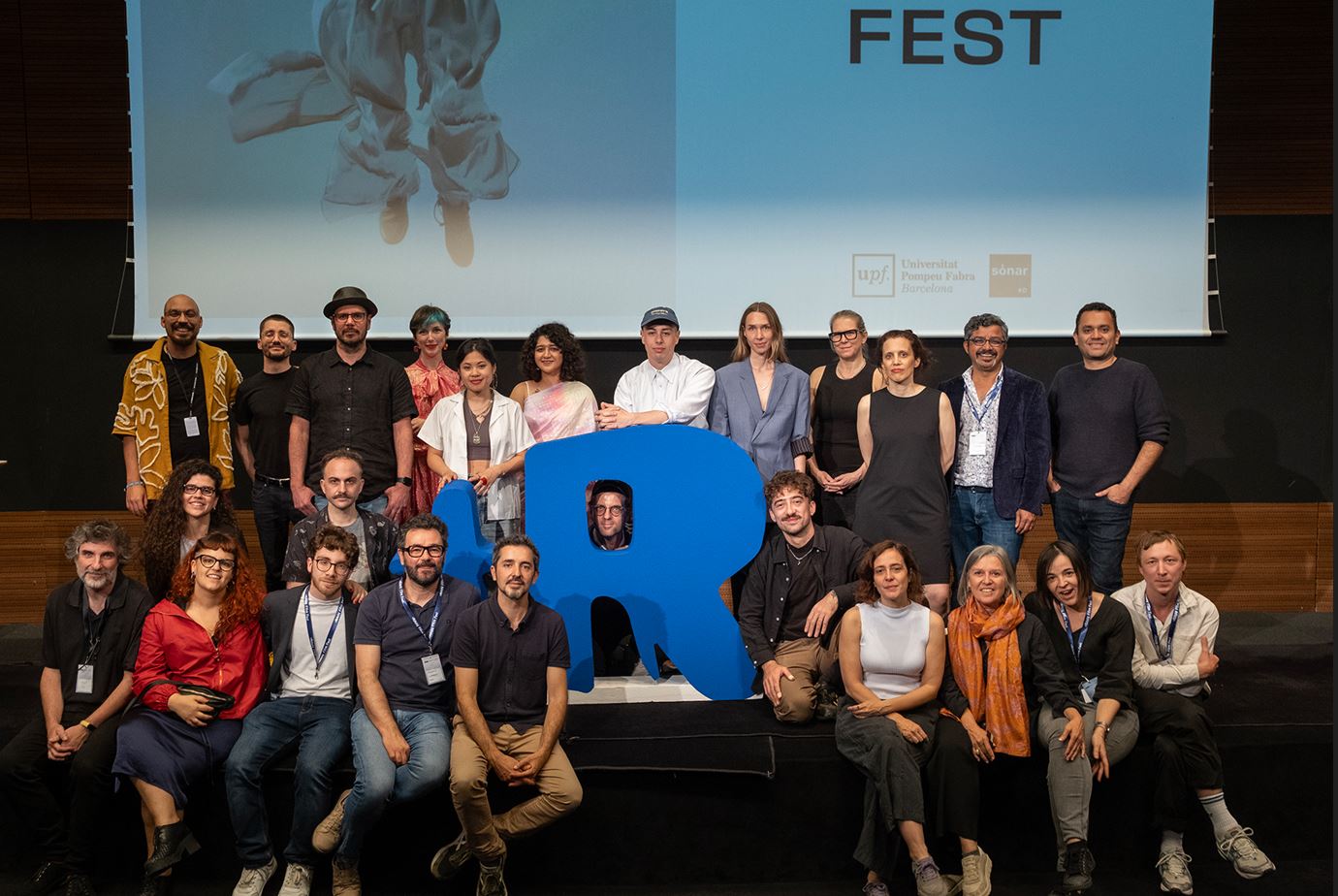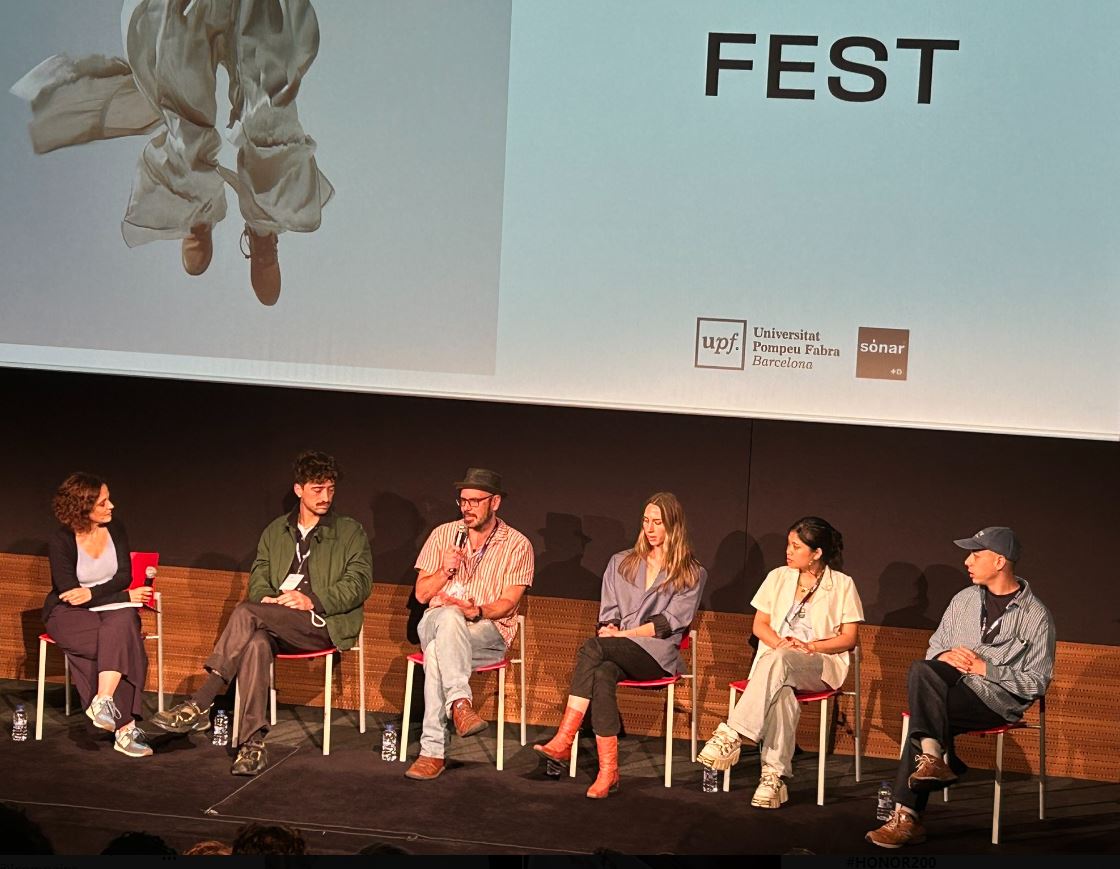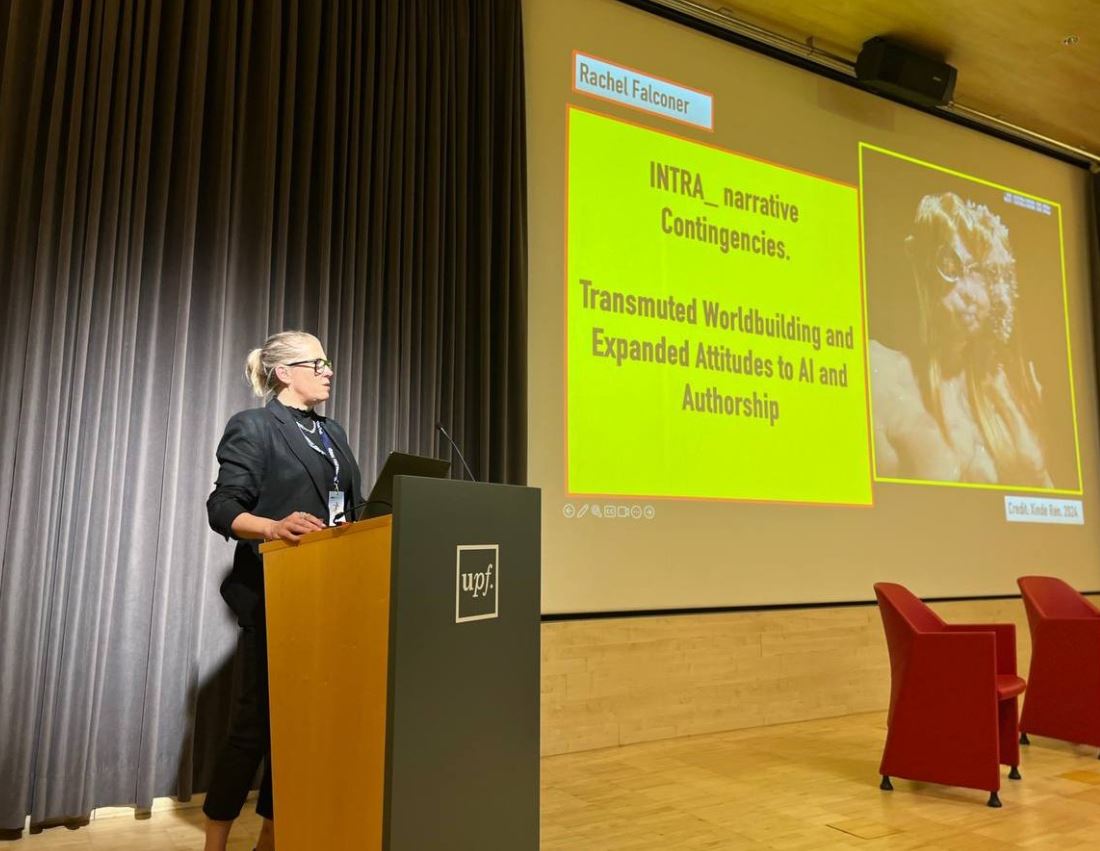The second edition of +RAIN surprises with the expansion of new ways of making cinema with AI
While last year +RAIN unveiled the new universe of creativity and audiovisuals, thanks to the emergence of new generative AI tools, this second edition has seen an increase and diversification of new ways of film making using artificial intelligence, as well as research, experimentation and transfer in the field.

“Any sufficiently advanced technology is indistinguishable from magic”. This was uttered more than 60 years ago by the writer and scientist Arthur C. Clarke. Visionary at that time, his reflection is today laden with meaning. This was highlighted by Vanesa Daza, vice-rector for Knowledge Transfer at UPF, who paraphrased Clarke’s quote during the presentation of +RAIN, the first European festival of film created with AI, now in its second edition and year, co-organized by UPF and Sónar.
“AI is evolving much faster and more drastically than we could have expected”, in the words of Frederic Guerrero-Solé, co-director of +RAIN. A good example of this is that in this year’s edition, 232 films were submitted, five times more than for the first edition, from more than 40 countries. In parallel, research on this topic has grown exponentially, as could be seen during the RESEARCH section of the festival, this year divided into two distinct spaces: RAINSIGHT, dedicated rather to theoretical reflection; and RAINNOVA, more focused on the presentation of projects and experimental initiatives of AI applied to audiovisuals.

From the point of view of reflection, the impact of AI in the field of creativity and audiovisual narrative was analysed; its ethical, political, employment and copyright implications; and the gender, racial or class biases of the images generated using current technologies. “We need to advance technology, but with a critical spirit and distancing ourselves from techno-utopian visions”, said Mercè Oliva, director of the UPF Department of Communication. Throughout the festival, several voices stressed the need to involve experts and professionals from different disciplines and from the public and private sectors in the development of AI so that it will benefit society and the world of creation. This was expressed by both the rector of UPF, Laia de Nadal, and the director of Sónar+D, Andrea Faroppa. In fact, the festival itself is an example of interdisciplinarity, as it is organized by the UPF Department of Communication, with the collaboration of the Department of Engineering. The director of the latter, Vladimir Estivill, highlighted that the reflections arising from RAIN “contribute to guiding the research of engineers towards useful objectives for society and the world of art”.
The podium of the second edition of +RAIN Film Festival
Another idea that was reiterated during +RAIN is that the growing technological support available to artists does not detract from their creative process. In fact, this is the leitmotif of the poster of this year’s edition, which shows the image of an elevating artist, as recalled by festival co-director, Anna Giralt. Proof of the talent of the artists who have incorporated AI into their creative processes are the 10 finalist films of +RAIN, which can be seen on Filmin until 30 June.
In this edition, the Best Film Award went to 512x512 by Arthur Chopin (France, 2023), a film that reflects on the biases of AI when representing the human body. Another of the prize-winning short films, in this case awarded the Jury Prize, is Fried Egg by Rucha Thigale (United Kingdom, 2024), a film about the passage of time based on the classic question: “What came first, the chicken or the egg?”. Finally, this year the Special Jury Mention went to Jonas Sanson (Brazil, 2024) for Morbo, which deals with the different facets of urban life and the emotions of its inhabitants. These three films along with the other seven finalists, all short films, were screened on Tuesday afternoon during the festival, with their creators in attendance. Many of them said that the artistic process itself has helped them to better understand the creative potential of these tools through trial and error, as also noted by another of the festival’s co-directors, Coloma Ballester.

One of the two discussion tables with the creators during the FEST section.
When using generative AI tools, one major difficulty is “to prepare prompts that generate the desired images”- said Jimena Aguilar (Argentina), author of the finalist film Sueño finlandés y paranoico, which paints a dystopian future full of imagination and disruptive elements. Contrarily, one of its greatest advantages is that “AI can help creators overcome their difficulties and limitations during the artistic process”, as Maria Than (United Kingdom), author of the finalist short film Home Age to Avalokitesvara revealed, and with which she goes back to her childhood to remember how her parents transmitted the Buddhist religion to her. It also reflects on the collective memory Skopje 2014 According to ChatGPT by Pauline Blanchet, in this case to explore the effectiveness of this tool to recover the city’s past.
AI, more than a tool: it is also part of the storylines of many of the films
AI is not just a tool used to make films; it also penetrates its own narrative thread, along with other concerns and challenges of the contemporary world, such as information credibility or the ecological crisis, among others. That we should question the veracity of what we see is the intention behind Rachel Maclean’s DUCK, one of the finalist films, that explores the possibilities of deep-fake for some of its main characters to take on the appearance of Marilyn Monroe or James Bond. Other characters are imaginary beings with the appearance of a duck.

Animal and human faces also coexist in the short film Time Metallurgist (Tomas Rampula, Czech Republic), based on the story of the British photographer and researcher E. Muybridge, who travelled to the Wild West invited by Leland Stanford, the builder of the transcontinental railroad and one of the main perpetrators of the massacre of Native Americans and buffalo. The short film condemns the massacre and draws parallels with the extractive nature of capitalism in our times. Yet more emphatically ecological is the finalist short film Ripear un desierto (Felipe Elgueta, Chile), which denounces the environmental crisis of the Atacama desert in northern Chile, while Anna Halbleib’s When people talk about their dead, they look up explores a new funerary narrative, describing the biological process of the decomposition of the human body after death.
As the co-director of +RAIN Jordi Balló explained, the aim of screening “all these films together and consecutively” during the festival was to allow the public to “better grasp” how AI is being used for creative purposes at the moment.
What does it mean to be creative in the age of artificial intelligence?

Precisely, RAINSIGHT reflected on how to rethink cinema in the age of generative AI, with the help of Shyam Sundar, director of the Center for Socially Responsible Artificial Intelligence at Penn State University. Sundar said that there are more and more and higher quality generative AI tools that can be applied to the world of audiovisuals, of which Sora is a good example, as it is capable of converting texts to video instantly. But, beyond highlighting the sophistication of AI, Sundar posed the following question: “Does creativity consist of juxtaposing existing data but combining it in a different way to generate content with a coherent-appearing structure or is it the expression of new ideas and thoughts that arise from one’s own experiences and from the soul?”. In Sundar’s opinion, we also need to “properly calibrate” the trust we place in AI tools and learn to “work collaboratively” with each of them. In this regard, he urged those responsible for these technologies to “clearly communicate” their options and limitations.
The RAINSIGHT billboard featured many other renowned experts such as Marcelo Bertalmío (a researcher at the CSIC, the CSO, and co-founder of the startup Lucid), Christian Canton (head of engineering at META, in charge of AI), Carlos Castillo (ICREA researcher, head of the Web Science and Social Computing research group at UPF), and Rachel Falconer (researcher in digital arts at Goldsmiths, University of London). Falconer explained how some audiovisual products and experiences developed using AI allow the public to interact with their content. It is what is known as “intranarrative”, because, once immersed in the story, viewers can change and “co-create” what they are seeing.

The most innovative artists are already launching and testing the potential of AI, as highlighted during RAINNOVA. One of the projects presented is OpenDocs, by Artefacto Films in collaboration with Runway, a program to promote the creation of documentaries with the support of AI. Jorge Caballero, a filmmaker and engineer linked to Artefacto and UPF, explained that most of the documentaries produced with the program are characterized by “the mixture of synthetic images, the interactivity and multimodality of text, voice and image or the production of products with an incomplete appearance”.
Documenting the individual and collective memory is the subject of other experimental projects presented. Such is the case of To be loved, an approach to post-memory through a family archive, presented by Carme Puche (filmmaker and vice-president of Dones Visuals - visual women) and Sergio Álvarez-Napagao (filmmaker and researcher at the UPC). Another of the topics explored at the festival is the potential of AI to generate music and audio. Jordi Pons presented the Stable Audio system (from Stability.AI), “which not only allows transforming texts into audio, but also generating music from voice messages”.
+RAIN, a space to experience new audiovisual and musical formats with AI
Music accompanied by AI-generated audiovisuals was once again the protagonist of the LIVE section, which enlivened the festival evenings on the Poblenou campus. One of the many shows performed was Decolonizing Patterns, by Citlali Hernández, a transdisciplinary artist from the Axolot.cat collective. In fact, the experimentation of new creative formats was also constant in different sections of the festival. For example, FEST viewers were able to attend a section of L[AI]VE CINEMA, creating a live collaborative film led by Hugging Face.

This and many other shows prove that +RAIN, which will continue on 13 and 14 June 14 at Sónar+D, is a process of permanent discovery, which constantly leads us to new, far removed from conventional audiovisual, musical and artistic narratives. Once again, it is impossible to remain indifferent after discovering the most innovative worlds of the visual arts.
